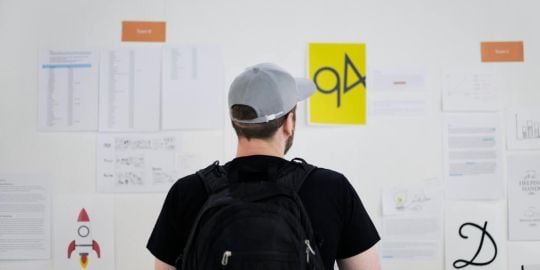Moving to Australia with children

Childcare centers in Australia provide part-time or full-time care for children and can be found across all areas of the country. Usually, they provide care from early morning hours until late in the evenings and are run by private businesses, local councils or community centers, or non-profit groups. Some employers may also operate their own facilities for their staff's children.
Types of child care in Australia
There are generally two main options when it comes to childcare in Australia. The first is family daycare, which involves a small group of children in an approved carer's home. The second option is center-based care, which is also called “long day care.” Long day care includes preschools or kindergartens.
Both long daycare centers and family daycare services in Australia require fees, which can vary depending on the location, service, and hours of care required. Families may also be eligible for government subsidies to help with the cost of childcare. It is recommended to research and visit different childcare providers, understand their philosophy, programs, and facilities, and consider factors such as proximity to home or work when selecting a suitable option for your child.
Childcare centers in Australia prioritize the well-being and development of children, providing opportunities for social interaction, cognitive growth, and emotional support. They often follow the Early Years Learning Framework, a national curriculum framework that guides educational programs for young children. To ensure the highest quality of care, all childcare services in Australia must meet regulatory standards and undergo regular assessments.
In Australia, early learning and child care are considered the foundation for children to develop both educationally and socially and is highly valued for the developmental opportunities it gives children. The Australia Children's Education and Care Quality Authority (ACECQA) is an independent national authority that works with the government to provide a framework for children's education and care.
Child day care in Australia will cover a variety of activities and duties, including; bottle feeding, eating, sleep time, nappy changing and toileting, and parents will always be notified about their child's daily routine. A day can be broken into many different activities, such as arts and crafts, rhymes and songs, and cooking activities, all to aid the development of the child's social and educational skills.
Family daycare
Family daycare in Australia involves care provided in a registered educator's home. It offers a smaller, home-like setting with a more flexible schedule. Family daycare providers are approved and monitored by government authorities, ensuring compliance with regulations and offering a supportive learning environment for children. Websites like Family Day Care can help you find daycare options near where you live.
Long daycare
Long daycare centers in Australia operate throughout the week, providing full-day care for children from infancy to school age. These centers are regulated and licensed by the government, ensuring they meet specific standards of safety, quality, and educational programming. They provide well-trained staff and structured programs and tend to cater to much larger groups of kids than you would encounter in family daycare. They are also known for structured routines, age-appropriate activities, and qualified educators to support children's learning and socialization.
Nannies
Nannies and au pairs are relatively popular childcare options in Australia, although, overall, more families make use of daycare. If your family can afford a nanny, they are a great option for providing families with flexible and personalized care for their children and can range from being a live-in nanny to just someone who helps for a few critical hours. Nannies are often preferred by families seeking professional caregivers who can offer dedicated care within the home, while au pairs appeal to families interested in a cultural exchange experience and affordable live-in childcare. The popularity of nannies and au pairs varies among different regions and communities within Australia, and there are a number of agencies that can help connect you with a suitable nanny in your region, such as Australian Nanny Association and We Need a Nanny.
Funding for daycare in Australia
In Australia, the government provides assistance for childcare through the Child Care Subsidy (CCS) program. This program is designed to support families accessing approved childcare centers, family daycare, and outside-school-hours care. At present, the CCS program does not extend to nannies or in-home care arrangements, which is something to consider when choosing between the two options.
While government funding is not available specifically for nannies, some families may be eligible for the In-Home Care (IHC) program, which provides subsidized care for families with complex needs or where other types of childcare are not suitable.
Non-Australian citizens can access the Child Care Subsidy (CCS) program, provided they meet certain eligibility criteria. The CCS program is available to families who are Australian residents, hold a permanent visa, have applied for a permanent visa, or have been granted a visa under a specified category. This means that non-citizens residing in Australia, such as those on temporary visas or with pending permanent visa applications, may also be eligible for the CCS program.
The educational system in Australia
The education system for children In Australia typically consists of primary school and secondary school. Be aware that Australian states may have slightly different systems in terms of the age at which primary school attendance begins, so always check out your state's regulations rather than assuming a national standard.
In Australia, primary school education is the first stage of formal education in Australia. It generally covers the ages of around 5 to 12 years, depending on the state or territory. Primary education is compulsory and provided for free in government schools. It focuses on building foundational skills in subjects such as English, mathematics, science, social studies, and physical education. Parents also have the option to enroll their children in non-government (private or independent) primary schools, which may charge tuition fees — these could be religious, run according to a specific philosophy (Steiner), or be designed for children with special needs.
Secondary school education in Australia follows primary school and covers the ages of approximately 12 to 18 years. It is compulsory for children to attend secondary school until a certain age, which is something else that varies depending on the state or territory. In government schools, secondary education is generally provided for free. The curriculum in secondary school becomes more specialized as students progress, offering a wider range of subjects and choices. Students typically work towards obtaining their secondary school certificates, such as the Victorian Certificate of Education (VCE) or the New South Wales Higher School Certificate (HSC). Non-government secondary schools, including Catholic and independent schools, may charge tuition fees.
Unlike many countries, Australia does not have a universal university entrance exam that applies nationwide. The university admission process varies between states and territories, and each has its own education authority responsible for administering and regulating the admission process.
In most states, university admission is based on the student's Australian Tertiary Admission Rank (ATAR) or equivalent. The ATAR is a ranking system that compares a student's academic performance with other students in their state or territory. It is primarily based on a student's scores in their final year of secondary school (e.g., Year 12 or equivalent). The ATAR is used by universities to determine eligibility for entry into undergraduate programs.









